On Depicting the Variable-Time Commuter
6 min read
February 28th, 2025
art
I just spent a month in New York City, and I had the opportunity to participate in every artist’s favorite pastime on public transportation – drawing people. On trips to various destinations, both near and far, I succeeded and failed to depict my fellow travelers. In much the same way Einstein arrived at the theory of special relativity by sitting on a tram (with some steps in between), I have arrived at the theory of successful subway sketching.
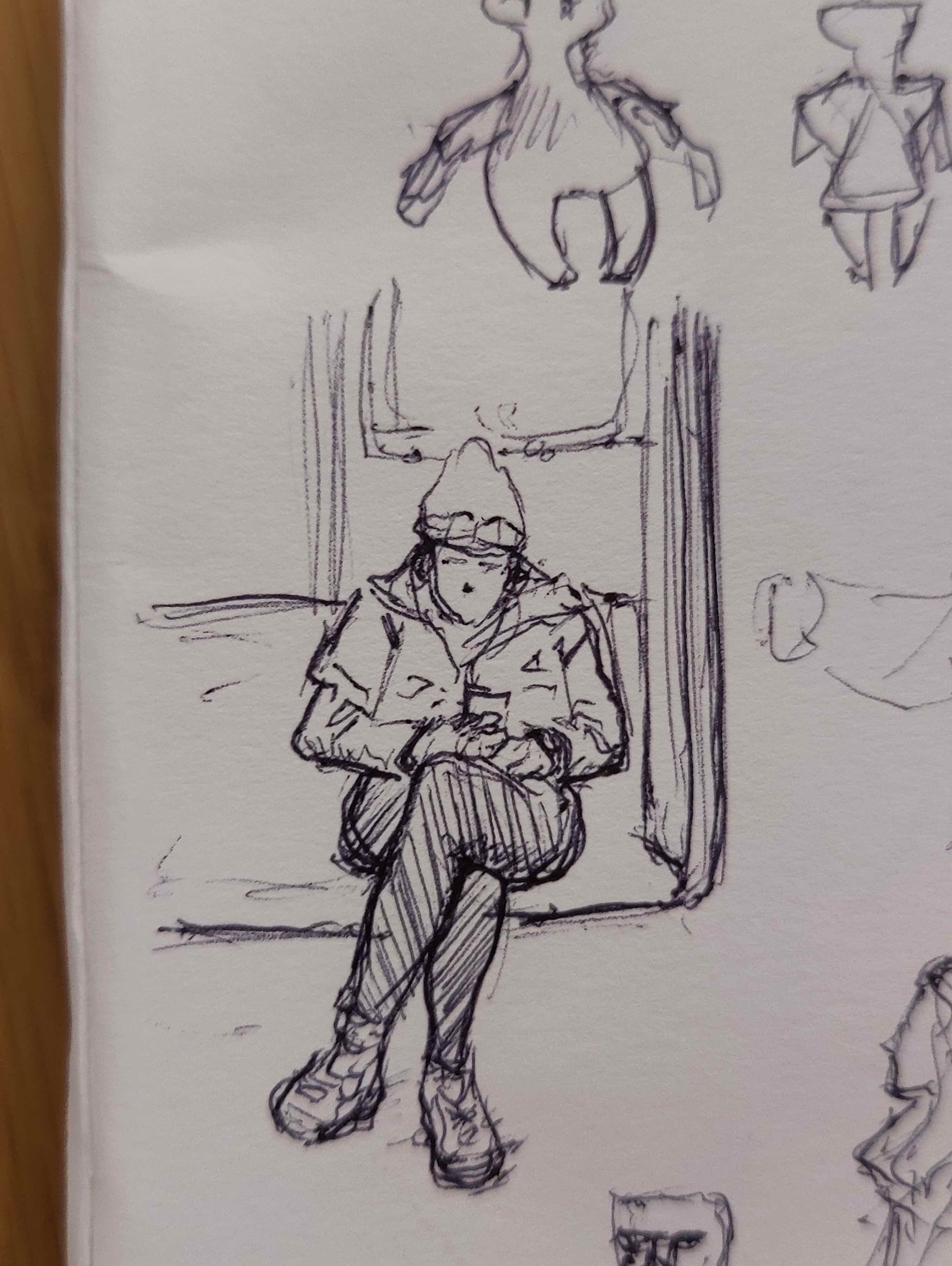
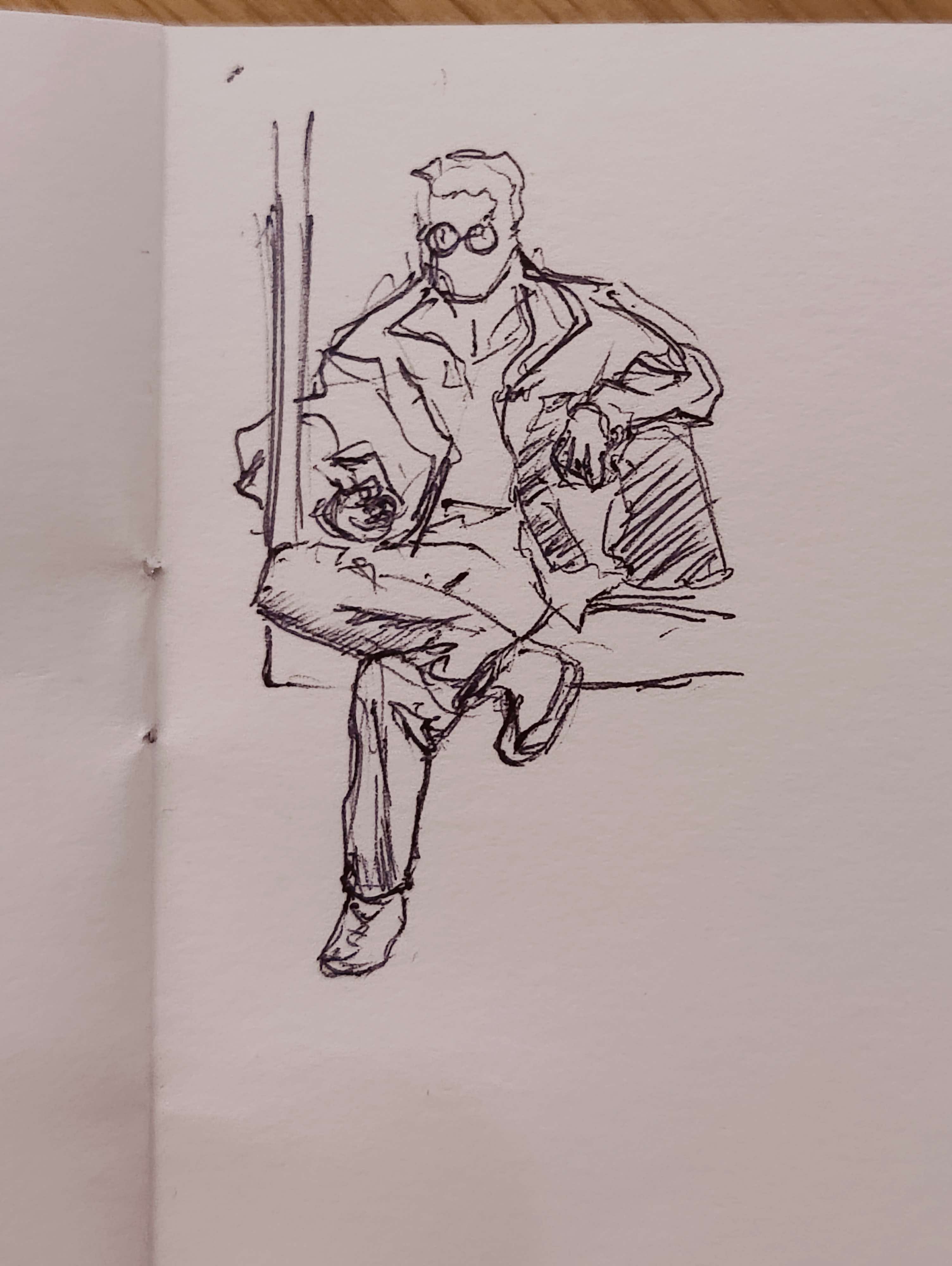
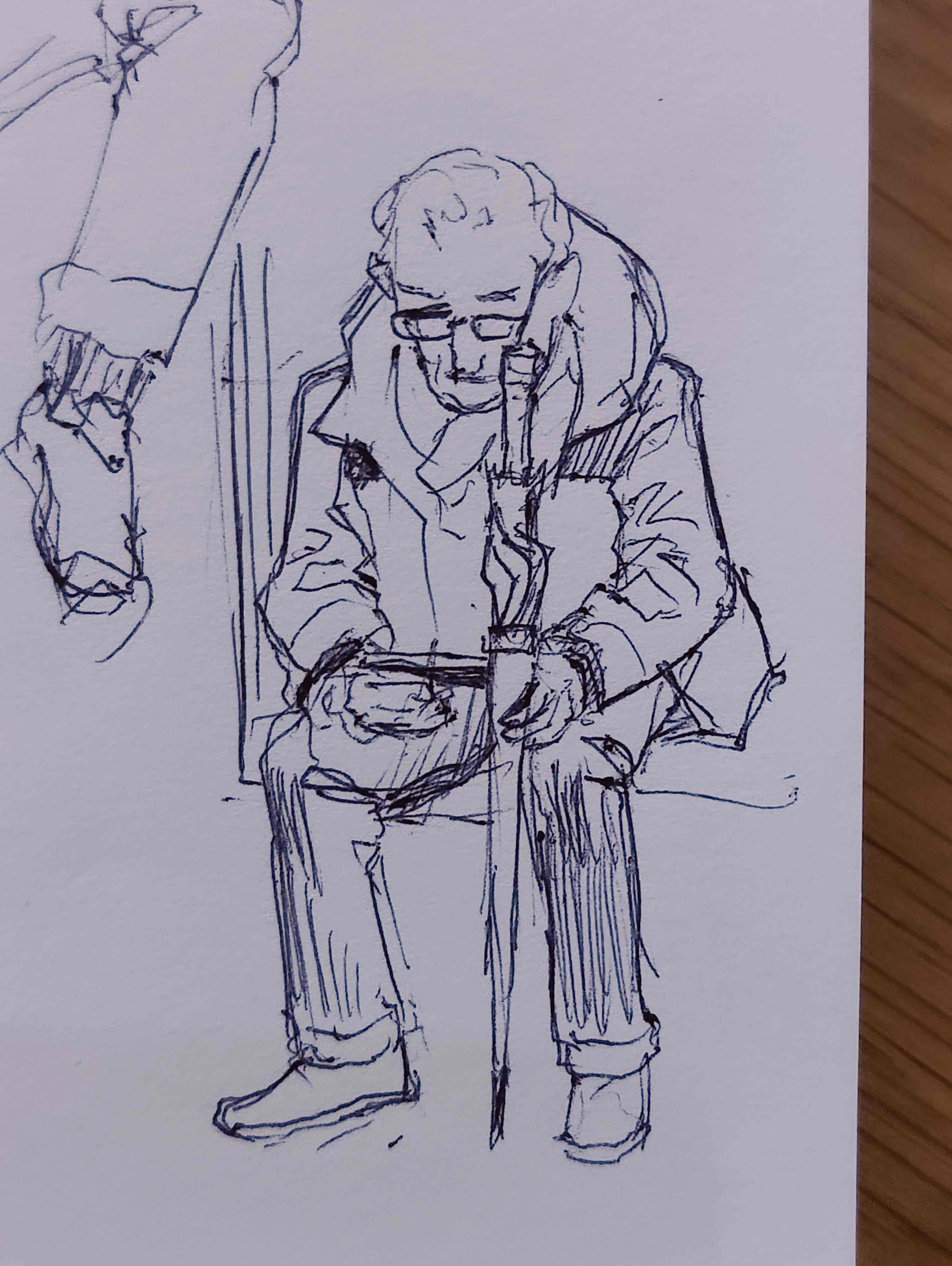
Know thy transfers, be they midway or final
The artist should be aware of at what stations she needs to transfer. Everyone does, of course, but the artist needs this knowledge somewhat deeply ingrained. A consequence of having the phone readily available is the lack of need to commit information to memory. This is not an issue for the city natives, but for the unfamiliar artist, the need arises to double and triple-check the station. How can the artist focus on rapidly gathering the situation and putting pen(cil) to paper when they run the risk of missing their stop? A quick check is 10 seconds of precious time. The subject is gone and now the drawing must be finished by memory (or, God forbid, imagination).
I missed my stop once while I was drawing, though the stakes were low because nobody was waiting for me to arrive. If the delay to the destination is acceptable, then by all means don’t know the transfers.
Be seated.
The subway is not exactly a smooth ride. It sounds obvious, but if the artist can find a seat, she should.
There is perhaps one scenario in which standing can work. I have depicted it below. The artist needs an anchor they can hold while keeping both hands free to hold the tools. Having tried it, I can say that sitting is still exponentially easier.
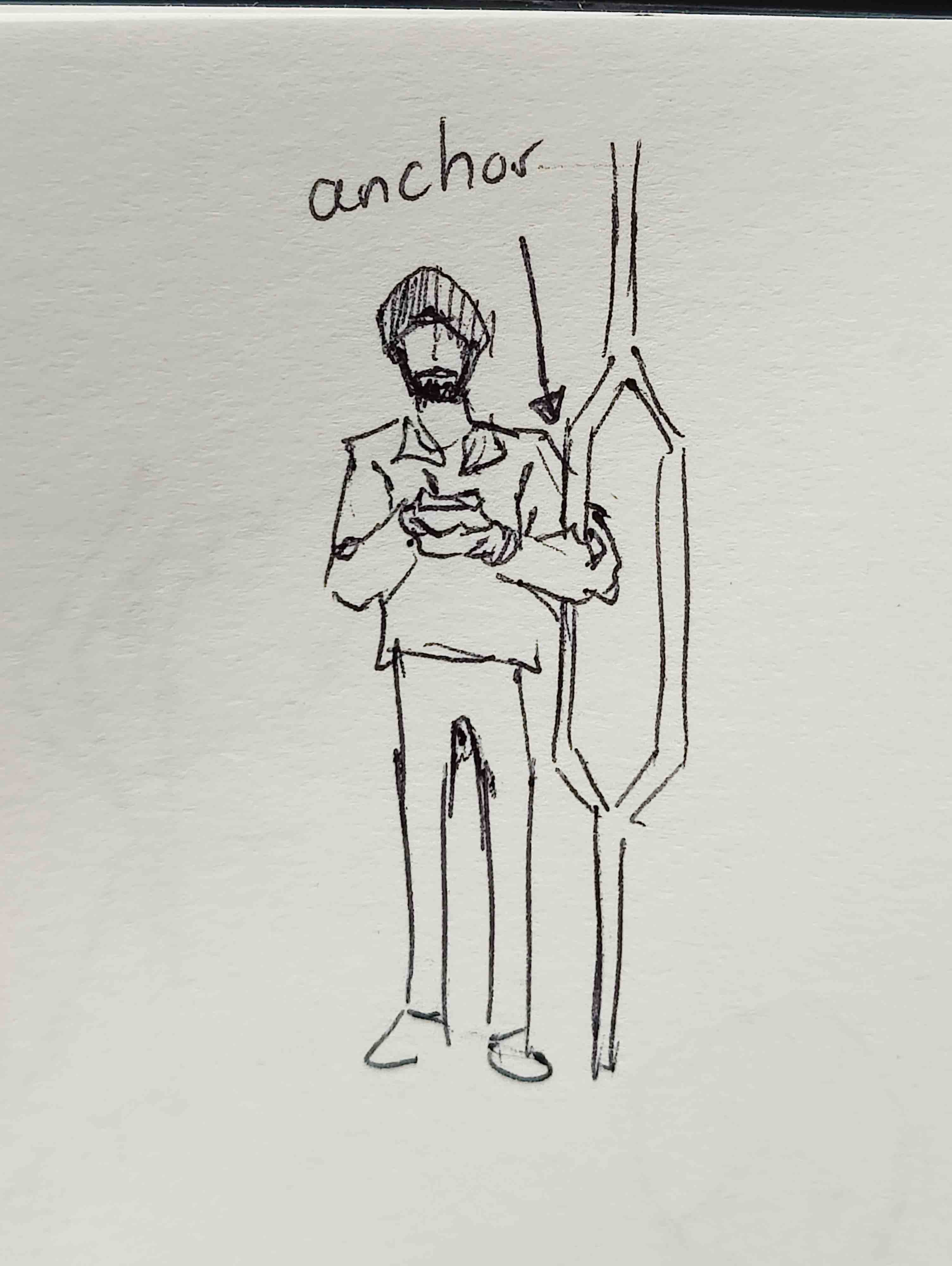
Some will say that they have no problem standing without support while commuting, and to that I say -- try writing something.
Look twice, draw once – the subject is ephemeral.
Skill and experience in observational drawing will always help. But in the field of rapid public transport, each drawing can feel like a timed figure drawing where nobody but the subject knows how long the pose is being held for. The subject may leave, or be occluded by new passengers. Conventional advice might be to draw confidently and swiftly, but I would advise a quick but focused examination first. Is the subject holding a bag? How are they holding their body? How baggy are their pants? The artist should draw with celerity, but stretch her memory to fill in the gaps if the subject flees the scene mid-stroke. How much is invented and how much is reality is up to the artist. We aren’t there, after all.
Addendum
I was talking with a friend on the subject of this article when she asked a thought-provoking question -- what am I looking for when I choose a subject?
I think this answer will vary from person to person. Within the constraints of being in an acceptable field-of-view and distance, priority one was finding an interesting subject, be that an article of clothing or pose. Unfortunately, a lot of subway riders are looking at their phones, which leads to similar poses. I think the opportunity to capture two people interacting is gold, but alas, in the few times it felt doable, I was standing (during regular commute hours, yikes).
I tend to capture fully-clothed poses, perhaps because that is difficult for me (I don't study enough clothing). If an artist is interested in drawing hands grasping things, then the opportunities are endless. Commuters are holding the railings, their bags, their phones, their gloves etc. Similarly, one could focus on rapid face sketches instead, opting to improve their ability to capture likeness in a few strokes.
Let me let you in on one more secret -- the subject does not have to be people! Not only is every space different, but it can also be depicted in different ways. Observing and drawing spaces is how greats like the late Kim Jung Gi learned to get more out of the same page, often applying a fisheye projection to a linear world.
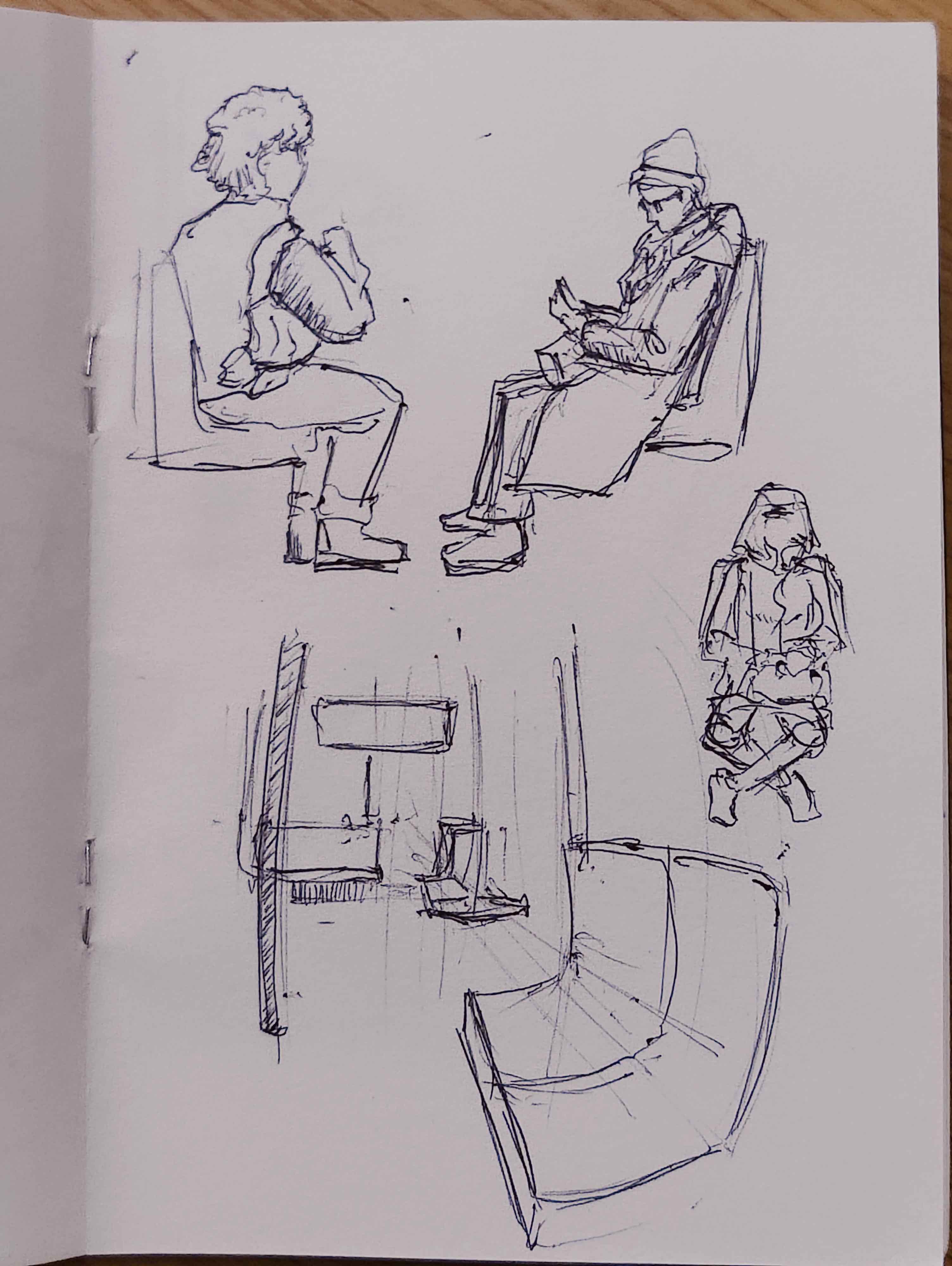
Weapons of Choice
Before I conclude, I would like to briefly touch on my tools in this experiment. I don't own a fanny-pack nor I do I have a backpack on me all times, so I wanted items I could keep directly on my person.

The black sketchbook is something I bought in an art store in Utrecht (a short train ride away from Amsterdam). The number of pages (not a lot) and the binding means it has no issue being folded, and its size makes it perfect for fitting in my back pocket. I bought three of those and I find them very effective.
The yellow one I bought while in New York while hanging out with a friend. Although it is much thicker, it easily fits in big jacket pockets. I fear that is only a winter strategy, however. I haven't bought a ring-bound sketchbook like this in a long time, but I'm very happy with it. Every page always lays flat, and the thickness makes it easy to hold and apply pressure to while standing.
My pen is the Zebra F-301 Retractable Ballpoint. Honestly, I think any ballpoint pen would suffice, but online voices said this pen is a workhorse. It has smooth ink flow without much buildup. It's also smaller than a regular BIC pen, which means it fits in my pockets comfortably.
That said I might try drawing exclusively in gel ink. Ballpoint is forgiving.
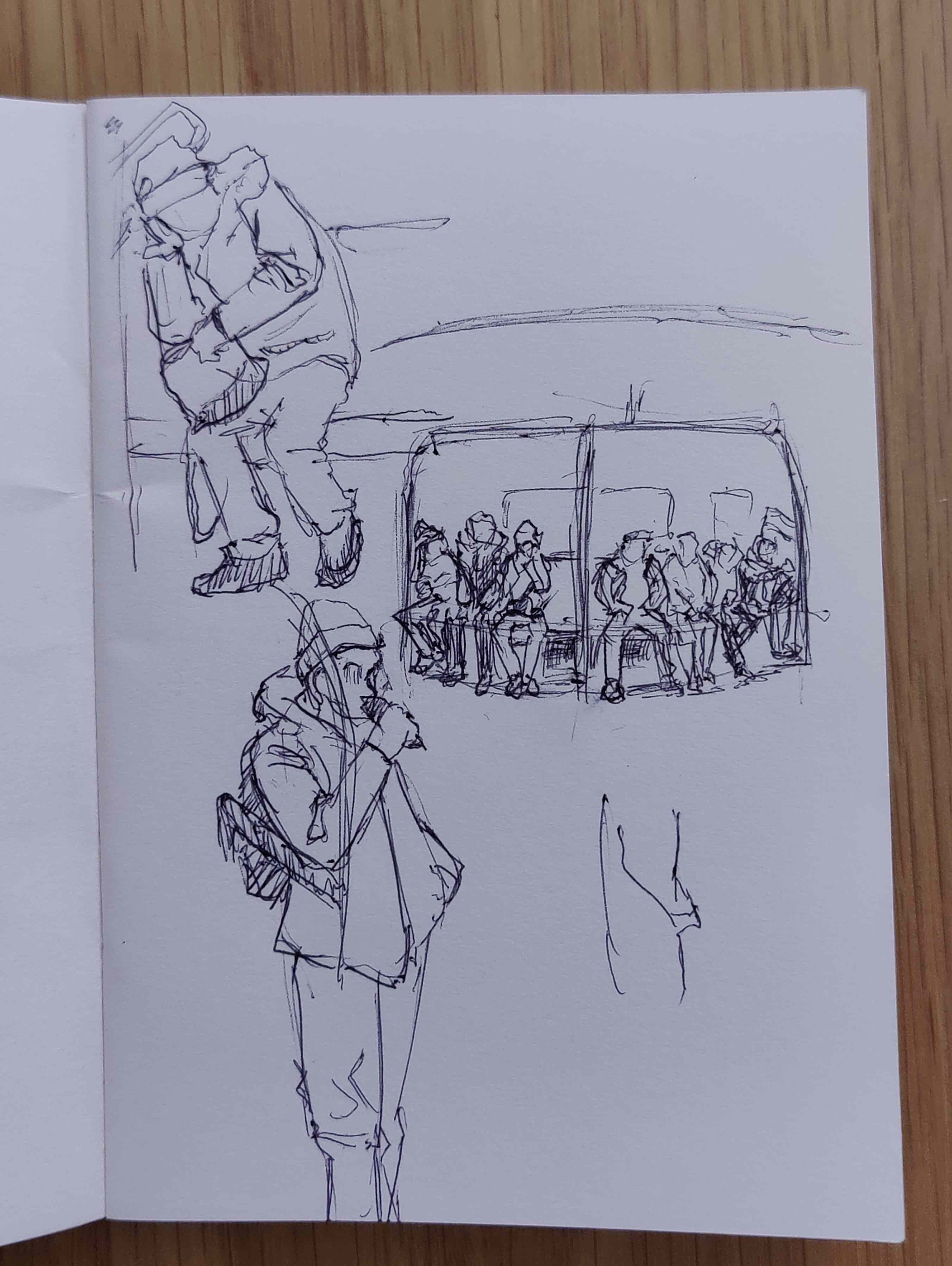
You can get any new thoughts to your inbox by subscribing.
